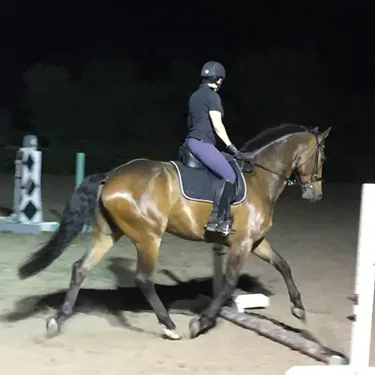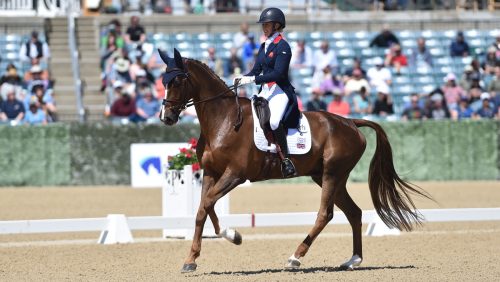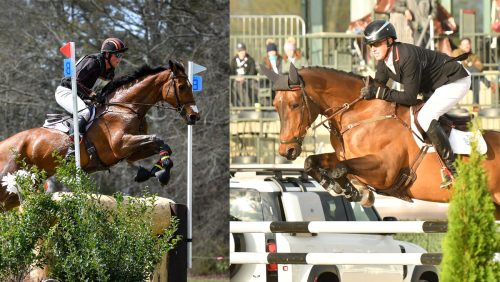Our columnist points out that a rider’s success largely boils down to how many hours he spends in the saddle.
There are several diverse groups of riders who all know, to varying degrees, that in order to become better they need to ride more hours than they currently do.
Whether or not they’ve read two famous maxims by the ancient Greek philosopher Aristotle, they intuitively know them by heart and essence. The two quotations are: “For things that we have to learn before we can do them, we learn by doing them,” and, “We are what we repeatedly do. Excellence then, is not an act, but a habit.”
Someone who wants to become a great pianist plays the piano. A rider rides. It’s just a cliché for all sorts of developable skills and abilities. There’s even a joke about the man who hails down the New York City cab. “Hey, cabbie, how do I get to Carnegie Hall?” “Practice, practice, practice!” answers the cabbie.
At the saddest end of our aspiring rider spectrum is the person for whom all doors to riding time seem locked shut. This rider may be on military deployment to Korea. Another may have three children under the age of 4 and limited funds to pay a babysitter. Another may have a full-time job in downtown Chicago. The list is pretty extensive, but the inescapable constant is that time to ride horses just doesn’t exist, not, at least, at this moment of these riders’ lives.
Needed: The Right Horse
There are also many riders who can’t ride because the horse they have is unsuitable, usually because of long-term unsoundness or because the horse has a difficult temperament. In theory, the riders who can’t ride because the horses they own can’t be ridden would simply get rid of their current horses and start over on horses that are suitable. But this isn’t what usually happens in real life.
The harsh fact is that there are only two real options for a basically unsound horse: retirement, which costs several thousand dollars a year, or euthanasia, which is too painful for many owners to bear. Unless these owners can face euthanasia, or have enough money to pay for the unsound horse to be retired and buy a second horse to ride, their riding time gets shut down.
Again, theoretically, those who own horses with problematic dispositions or quirks—too hot, too aggressive, rears, bucks, spooks—could sell, give away or put down the ones they can’t ride, opening up chances to buy horses they can ride. Sometimes they will, and sometimes they won’t. If they won’t, they shut the door on riding time.
ADVERTISEMENT
There’s another group of riders who theoretically could ride but often don’t. These are children and teenagers who are well supported by their families but rarely show up at the barn. Every barn owner has stories about the kids who “talk the talk but don’t walk the walk.” For them, there are higher life priorities.
It’s easy to blame boys, cars, parties and shopping, but often these riders do have a strong passion. It just doesn’t happen to be horseback riding. It would be nice, I suppose, if these kids would share that information with their bill-paying parents, but I’m sure most of them eventually do.
Another big group is those riders who could ride much more than they do “if only” they could force themselves to just do it. They have a horse or access to one. They have free time in their day, but there’s a lot of effort involved in that hour or so of riding.
There’s the commute to the barn. There’s the whole process of catching, grooming, mounting, cooling out, cleaning and blanketing the horse, and then the commute home. These riders find that mountain of sheer effort daunting. Many of them will only ride a couple of times a week.
We might dub these riders “Medium Core Riders.” They do ride, but they don’t have enough passion for riding to get them to push through when the going gets a little tough.
Somewhere between the “Hard Core Riders” who ride outdoors, by truck headlight, in a January blizzard in Minnesota, and the Medium Core Riders, is the huge group we might call “Three-Quarter Core Riders.”
These are serious riders. The teenagers who do spend every possible moment at the barn are a big part of this group. They would happily spend every waking hour at the barn if other parts of their lives (like school) didn’t get in the way. They are very serious about becoming good riders.
As large as the corps of dedicated young riders may be, by far the biggest contingent of those who we might call “Three-Quarter Core Riders” are adult amateurs. Many of these women (and a few men) would happily become “Hard Core Riders” if, again, life didn’t get in the way.
These include people with jobs outside the horse industry, families, pressures and obligations to something other than to a horse. They struggle to juggle their riding time with all the other requirements of their day. They might ride early in the morning or late in the evening. They find or kidnap babysitters and may sometimes miss their children’s violin recitals or Little League games to go to shows or events.
ADVERTISEMENT
Their personal relationships within the family are often strained by the tug of horses versus the tug of all their other obligations. In eventing, and probably in most of the other horse sports, the lower and middle rungs of the competitive ladder are filled with serious adult amateurs. These riders take lessons, read books, watch videos and go to clinics. They are the “bread and butter” of American horse sports.
Hard Core Riders
“Hard Core Riders” have a total passion for riding and in some way have the means and the time to indulge that passion. Some may have family money. Some are the professional trainers, teachers and riders that we find at every thriving stable. Some will be the riders who are reaching for the higher levels in the riding disciplines that are supported by the U.S. Equestrian Federation, such as dressage, reining, driving, eventing and show jumping.
Some of these virtually full-time riders will have “other lives,” but if they do, they’ve somehow worked out ways to have a riding life and a “normal” life somewhat simultaneously. More often the Hard Core Riders are single minded: Life is horses, horses are life.
Now, none of these “groups” are “real” in any definable sense. These are just general impressions that people who have spent years in the horse world seem to agree on, but in a vague, generalized sort of way. Riders constantly move in and out of these groups as their lives, their means and their levels of interest fluctuate and change.
If there’s any “constant” about these groups, it goes back to the two quotations by Aristotle, that those who learn to do something very well are likely to be those who have spent a great deal of time doing it. And if that “something” happens to be riding a horse, it follows logically that those who ride the best are usually drawn from that group of riders who ride the most.
Denny Emerson rode on the 1974 World Championship gold-medal eventing team. He served as the U.S. Eventing Association president twice and won the USEA Wofford Cup for his lifetime dedication to eventing. At his Tamarack Hill Farm in South Strafford, Vt., and Southern Pines, N.C., he trains horses and riders and stands stallions. An original Between Rounds contributor, Emerson began writing his column in 1989.
If you enjoyed this article and would like to read more like it, consider subscribing. “Finding And Making The Time To Ride” ran in the October 24, 2011, issue. Check out the table of contents to see what great stories are in the magazine this week.















